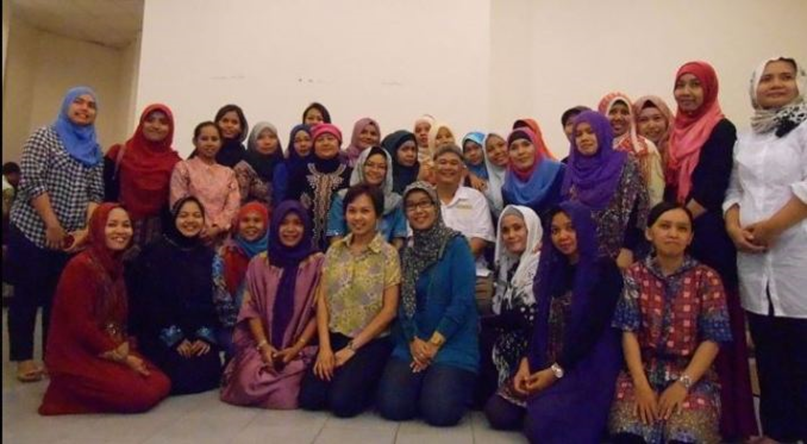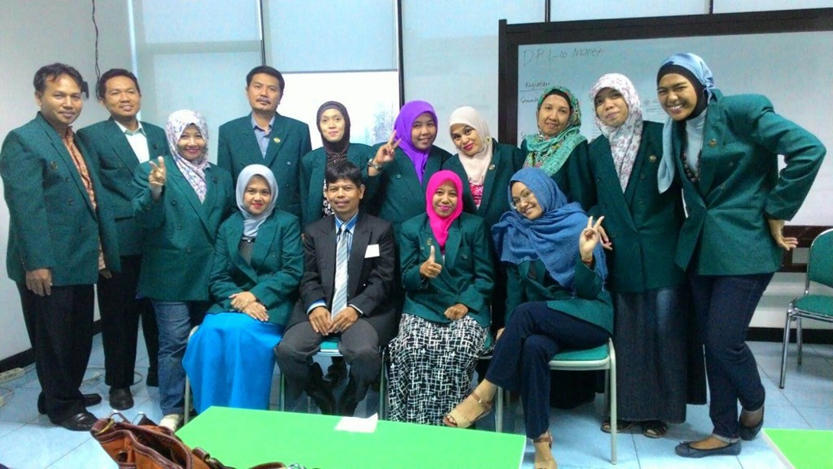
Cleaning up my old files, I stumbled upon an article of mine. It was an assignment, a self-reflection paper, given by my late lecturer at Uhamka Graduate School, Dr. Santi Djonhar, MA.
Ms. Santi was a unique person with unique teaching style. Not many students liked her teaching style. However, she was one of my favorite lecturers at Uhamka, not because of her teaching style, but because of the knowledge she shared.
What I’m sharing below is the paper assigned by her. I’m making it a blog article as a tribute to her, and to share with anyone what she had shared with her students. Dear Maam, may you rest in peace…

———–
HOW LEARNING TEFL AFFECTS MY TEACHING
When I first worked as a part time teacher for one of the prominent English course institutions, my sole purpose was to maintain and improve my English. I never had any formal English educational background, and I never thought that teaching English would someday become my passion and my life.
When I went to Malaysia due to my husband’s assignment, I still couldn’t give up teaching. Fortunately, I had a chance to teach at Edukasi Untuk Bangsa (EUB), a non-profit organization whose activity is teaching Indonesian Laborers in Malaysia. I even wrote the materials for some of the levels, along with the tests and teaching aids.

That was the point in time I realized that my knowledge wasn’t enough to write teaching materials. There were still many things to learn, and because of that I decided to further my study. Following the footsteps of my fellow teachers, I chose Uhamka Graduate school.
I gained so much knowledge from this school; however, what I’m going to share here is only about the subject of Teaching English as a Foreign Language (TEFL). Below are the 5 most important points I learned in the TEFL course:
1. The elements contributing to a foreign language learning
According to Noam Chomsky, all children are equipped with Language Acquisition Device (LAD) in their brains, enabling them to process languages [1]. However, in order for this LAD to function well, the most important thing is the existence of the “appropriate environment”.
It means children can learn any language … but language acquisition can finally occur only when both the exposure of the language and the chance to use the language are enough [1]

Although the conclusion of the research above was drawn based on a research of a child who was acquiring a foreign language, it is suggested that the same rule applies to adults who are also learning a foreign language. Therefore, the “appropriate environment” needs to be created in order the students are able to acquire the language in the classroom.
Before knowing about this, I expected my students to be able to produce the language only by giving them some examples of the form and some exercises and practicing activities. Although I did give my students enough time to produce the language, I didn’t give them enough exposures.
I gave them interesting activities and they were happy. However, I did not give them enough additional material to develop the language outside the classroom. As a result, they were able to produce the language exactly like what was taught, but they were not able to creatively produce the language out of what was taught in the class. That’s why, the next thing, promoting autonomous learning, is very important as well.
2. Promoting autonomous learning
Previously, as a course teacher, I never gave my students homework. I just thought that the students were busy enough with school homework, so giving them more homework would just make them hate English. However, this belief turns to be wrong.
Promoting learners’ autonomy is important because learning in classrooms is not enough for students. As explained before, in order that the LAD can function well, appropriate environment has to be created. Appropriate environment will never be created if the students are exposed to the language in the classroom, only for 4 hours a week, or even sometimes less than that. There are not enough hours for language exposure in class and the chance for them to practice the language is not enough either. Giving homework to promote autonomous learning is important so that they get exposure not only in the classroom, but also out of the classroom.
Furthermore, there will be times when they stop attending language classes; therefore, autonomous learning strategies should be introduced to students so that they will not be always dependent on the teacher. Being autonomous learner, students can solve their own problems in the language [2].
I now realize that promoting autonomous learning does not have to be excruciating for the students such as writing journal or note-taking. I can ask the students to watch movies, YouTube, play games or just listen to music. Anything fun related to the language that they can do outside the classroom will do.
3. Characteristics of a successful learner
According to research by Oxford [3], all learners actually apply some learning strategies. The difference between the successful learners’ and less successful learners’ learning strategies is that less successful learners apply their strategies not in an organized way.
In contrast, successful learners apply them in orchestration of cognitive (i.e. analyzing, reasoning, transferring information, taking notes and summarizing), metacognitive (i.e. organizing, evaluating, and planning), affective and social strategies to their emotions and motivation.
Oxford research furthers that individual learning style determines the students’ learning strategy choice. However, it doesn’t mean a person cannot learn something beyond their learning style. Learning strategy training can be advantageous to stretch a learners’ ability to learn beyond their comfort zone.
Although this knowledge is actually not new for me (I have taught my own children how to apply the strategies), I never taught this to my students. It turns out, teachers can and should encourage their students to apply some organized learning strategies as they promote students’ autonomous learning.
I should introduce them to some strategies by giving them tasks which resembles real life activities. In the end, the students themselves will choose whichever strategies suit their learning style; my duty is only to introduce them to the strategies.
4. Characteristics of a good language learner
Previously, I never thought there were certain characteristics that influence someone’s success in learning, but it turns out there are. There are at least 14 characteristics listed in Harmer’s book [2]
For me the four most influential characteristics of a good learner:
- Willing to guess word meaning
- Tries hard to get the message across even if with limited language knowledge
- Unafraid of making mistakes
- Constantly looks for patterns in the language and practices as often as possible.
Knowing these characteristics helps me assist my students learn better because many of them are still reluctant to produce the language due to shame. After learning this lesson, I actually shared this knowledge with one of my adult students who lacked confidence in producing the language.
It is so relieving that sharing this did help her try not to be afraid of making mistakes, to guess the meaning and to try hard to get her message across. She is now trying her best to be a better learner.
5. Development of English as a foreign language
As mentioned before, I wrote the materials for Indonesian Laborers class. At that time, I wrote the materials just using my experience and instinct as an English teacher.
However, after learning TEFL, I realized that the sequence of the material I wrote turns out to be incorrect. Although some subjects were introduced at the right time, some subjects were introduced too early or too late.
For example, the introduction of the regular past verb forms preceded the irregular verb forms. However, according to research, the irregular verb forms are acquired by a child before the regular verb forms [1]. It means irregular forms are easier to acquire and should be introduced before the regular forms.
Another mistake I did in sequencing the materials is that I introduced imperative sentences later, while it is supposed to be introduced at the beginning. Learning about how a child acquire English helps me write better materials in the future.

As an English teacher I realize I have strengths and weaknesses. I know that my strengths lie on my ability to present the materials systematically, my willingness to give extra effort to think of fun ways to help my students improve, and my ability to build rapport with my students.
I enjoy teaching English and always try my best to get my students understand and able to produce the language. I believe I have been quite a good teacher because most of my students, from children to adults, loved me based on students’ questionnaire.
Nevertheless, I also have weaknesses like what I have explained in the 5 points above. I didn’t build enough ‘appropriate environment’, encourage the students to be autonomous learners, or teach the learning strategies to enable them to solve their language problems themselves. These explain why sometimes my students could not creatively produce the language out of what they had learned in the classroom.
Continuing my study to Uhamka Graduate School is proven to be useful for me; the knowledge matters more than the degree. I believe understanding and implementing what I have learned to my teaching strategies will make me a better teacher.
Sinta DR – Jakarta, July, 2015 (repost from old blog)
——————
REFERENCES
[1] Djonhar, S.D., 9(2012). Introduction to Language Acquisition: The Acquisition of English as a Foreign Language. Jakarta: UHAMKA Press.
[2] Harmer, J. (2007). The Practice of English Language Teaching. Essex: Pearson Longman.
[3] Richards & Renandya. (2002). Methodology in Language Teaching: An Anthology of Current Practice. Cambridge: Cambridge University Press.